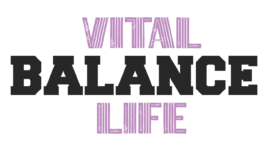You’ve flushed and now you’re watching in horror as the water rises. We’ve all been there. Don’t panic! Before you dial your plumber, we’re here to share some handy tips on how to unclog a toilet yourself. From plungers to toilet snakes, you’ll be surprised what you can do with the right tools and a little know-how. Let’s roll up our sleeves and get to work. It’s easier than you think!
Understanding the Clogging Problem
Before you can effectively unclog your toilet, it’s crucial to understand what’s causing the blockage in the first place. You see, not all clogs are created equal. Some are simple blockages that can be fixed with a plunger, while others may be a symptom of a more serious issue, such as a problem with your sewer line.
To identify the problem, you first need to examine the toilet’s behavior. If it’s not flushing properly, it could be due to a simple blockage in the toilet bowl or the trap. However, if multiple fixtures in your home are backing up, that’s a sign of a bigger issue. This could indicate a blockage in your main sewer line, which will require professional help to fix.
Also, pay attention to what you’re flushing. Items like baby wipes, sanitary products, and certain types of tissue paper can easily clog your toilet. Even “flushable” wipes can cause problems, as they don’t break down as quickly as regular toilet paper. So, remember, the best way to prevent clogs is to be mindful of what goes down your toilet.
Traditional Plunger Method
Using a trusty toilet plunger is your first line of defense when you’re dealing with a simple clog in your toilet, and it’s a method you’ll want to master. It’s not just about brute force; there’s a technique to it. First, you’ll want to make sure the plunger is submerged in water. This creates the necessary suction. If there isn’t enough water in the bowl, add enough until the plunger is covered.
Next, place the plunger over the drain hole, ensuring a tight seal. With a firm grip, press down slowly then pull up quickly. Repeat this process several times. The goal is to use the suction to dislodge the clog. It’s important to pull up quickly on the upstroke to draw the clog upwards.
If the water starts to drain, you’re making progress. Keep plunging until the toilet is flushing normally. If not, you might need to try a different approach or call in a professional. Remember, the key is persistence and patience. It might not work immediately, but don’t give up. The plunger method is a tried and true technique in the battle against toilet clogs.
Using a Toilet Snake
If plunging doesn’t work, you may want to try a call to a professional, or dial a bit deeper in your bag of tools and try a toilet snake, which you’ll find is surprisingly easy to use. Also known as a toilet auger, this device is designed to reach deeper into the drain to break up the clog.
Start by inserting the end of the snake into the toilet bowl and aim for the drain. You’ll need to apply a bit of force to get the snake through the trap of the toilet and into the drainpipe. Once you’ve got it in place, begin turning the handle on the snake. This motion causes the end of the snake to rotate and break up the clog.
Don’t be discouraged if it takes a few tries. You’re essentially fishing for the clog. If you meet resistance, you’ve likely hit the clog. Continue turning the handle to break it up.
Once you’ve cleared the clog, pull the snake out, flush the toilet to ensure it’s draining properly, and clean the snake thoroughly. This might not be the most glamorous job, but it’s effective and can save you a costly plumber’s bill.
DIY Unclogging Solutions
You can also try some DIY solutions when you’re faced with a stubbornly clogged toilet. These methods can be effective, easy, and most importantly, cost-friendly.
One method you might want to try is the hot water and dish soap trick. Pour half a cup of dish soap into the toilet bowl, followed by a bucket of hot (but not boiling) water. The soap can help to lubricate the clog while the hot water assists in breaking it down. Wait for about 20 minutes and then give it a flush.
Another approach you can try is using a wire coat hanger. Straighten out the hanger but leave the hook intact. With gloves on, gently insert the hook end into the toilet bowl and try to dislodge the blockage. Be careful not to scratch the porcelain.
Lastly, you could try a DIY drain snake using a plumber’s tape. Insert the tape into the bowl, then twist and pull it back up. Repeat until the obstruction is cleared.
Prevention and Maintenance Tips
While it’s crucial to know how to unclog a toilet, it’s equally important that you’re familiar with some preventative measures and maintenance tips to keep your toilet running smoothly.
Firstly, don’t treat your toilet like a trash can. Remember, toilets are designed for human waste and toilet paper only. Avoid flushing items like baby wipes, cotton balls, paper towels or feminine hygiene products. These items don’t break down like toilet paper and can easily cause clogs.
Next, you should also be mindful of the amount of toilet paper you use. If you’re an over-user, try reducing the amount per flush. This can significantly decrease the chances of clogs.
Additionally, keep a close eye on your toilet’s performance. If you notice weak flushes or water rising higher than usual, that could indicate a problem. Don’t wait for a full-blown clog to take action.
Lastly, consider regular professional inspections. Plumbers have the tools and knowledge to spot potential issues before they become big problems. Regular maintenance can save you a lot of headache and cost in the long run.



